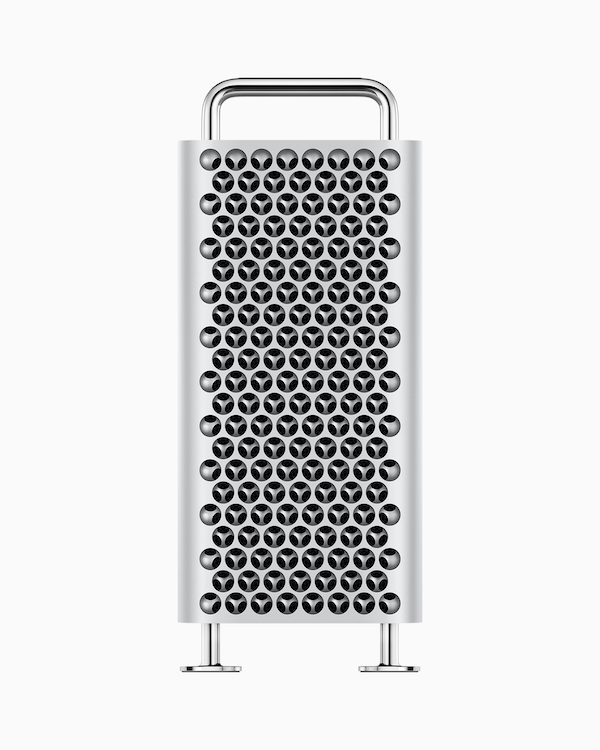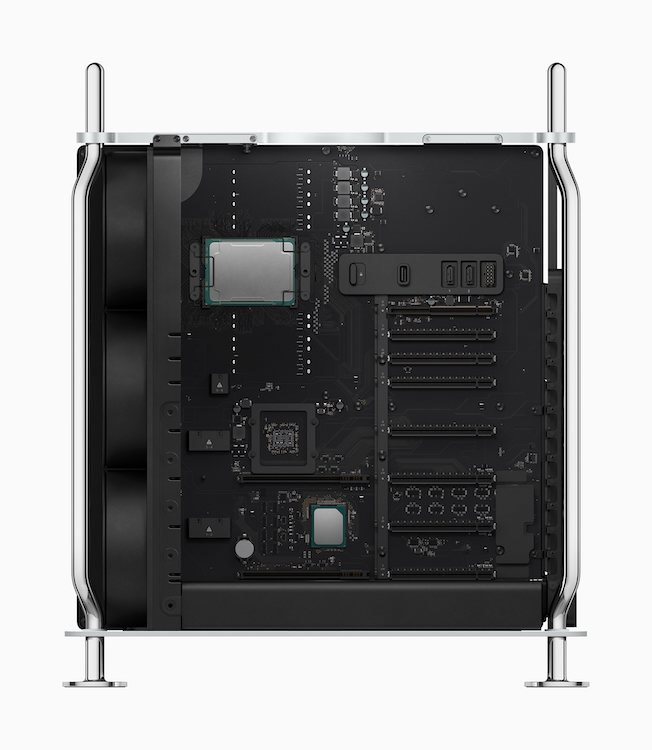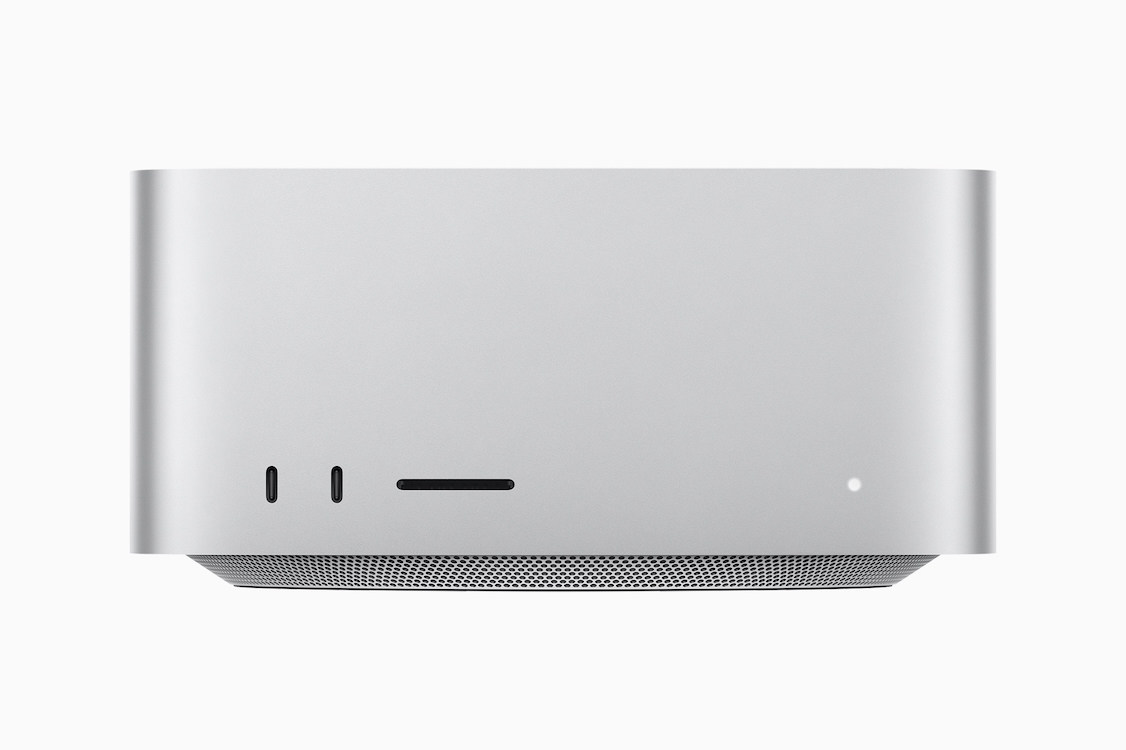|
|
Wednesday Comment: The Apple Silicon Mac ProBy Graham K. Rogers
For once Wall Street seems to have gained some confidence: there is some realization that Apple already has this all planned out. The way the M1 series has been developed - each iteration scaling up from the previous version, with the Ultra providing a creative solution by doubling up on the M1 Max - is a strong indication that Apple has a long term strategy for chip development. Like many I wonder how far the scaling could go. As a reminder, the current Mac Pro has options for 8-core to 28-core Intel Xeon processors and there are 8 PCI expansion slots. The next Mac Pro must somehow exceed this and the recently released Mac Studio.

Current Apple Mac Pro - Image courtesy of Apple
The Mac Studio was for professionals who need more power, but may have limitations, particularly in terms of budget. I have seen a couple of user comments about the price of the Studio with the M1 Ultra chip, but falling between the iMac Pro (now gone) and the Mac Pro, with its wide range of options (although it is way above my budget and power needs), it seems well-priced for what it can do. Its output exceeds a number of high end machines. The Mac Pro is a beast for a different class of user, such as makers of big budget movies, where the cost of several such devices - perhaps used only for the production itself - is factored into that budget; or for businesses in media or creative fields where the outlay is tax allowable?
The M1 Ultra which has output that exceeds some current high end chips is the starting point and it may be that one version of the MacPro could include that, or a version of this M1 chip. It is also possible, as Johnny Srouji mentioned, to link two of these via the motherboard. He sounded less than enthusiastic about this, but it is a solution. Others have suggested a further iteration of the M1 Ultra - created by linking two M1 Max chips - that would link 2 Ultra chips (see above). While this sounds good, John Ternus called the M1 Ultra the end of the development of the M1. That hints at the long-rumored M2, which would indeed be a multi-core chip, probably fabricated using a 4nm process, which would provide other benefits in use. The whole development of A-series and M-series chips has featured scalability, but also the speed with which new chips can be developed. An example of this was the A7 which moved smartphones to 64-bit processing (from 32 bit) causing a disturbance in the force. It took the industry by surprise and it was some 6 months before other chip makers could copy this advance. It was the A7 that put the idea of what became Apple silicon in my mind: Apple could design features into the chip that no one could copy for at least months, if ever in some cases. What would this do for the Mac? Well now we know.

Current Apple Mac Pro - Image courtesy of Apple
As with the M1, each development has allowed use of additional ports up from the basic two USB-C Thunderbolt 3 ports of the MacBook Air and MacBook Pro, with the adapted M1 chip of the Mac mini having additional ports. The M1 Pro and M1 Max allowed more ports and other features, including up to 64GB memory, while the M1 Ultra was able to double up on this: configurable up to 128GB. With the M1 Ultra there are additional ports, and more types (Ethernet, SD card, et al). Although it is speculation, what the Mac Pro could have designed into the SoC is likely to exceed this although the current Mac Pro can go up to 1.5TB of memory. The graphics capabilities are another matter. Users of the Mac Pro have always enjoyed the benefits of being able to choose a graphics card that would suit their workflow, in much the same way as they were able to select the right processor for the task (and the price). There are five Radeon graphics cards available for the current Mac Pro. Offering more than two using the SoC approach could stretch resources; but the SoC would preclude additional cards unless Apple has a solution to allow an upgraded card that would turn off the SoC graphics. I do not see this myself.
Apple therefore can offer the options of internal or external storage (or both) and while the disk solution decided on purchase is usually final, more internal storage spaces covers that, while a number of reports have revealed that the SSD in the Mac Studio is relatively easy to remove, and hence replace. David Crewe in PetaPixel later revealed that this is apparently blocked by software and is probably only possible if done by Apple. With WiFi and faster USB-C Thunderbolt 4 cables, external solutions are increasingly more widely used and I would expect limited internal space in a new Mac Pro.
There has always been a strong argument for expandability in the Pro devices although that has been less evident (for good reasons) in the notebook computers. The desktop Mac Pro is aimed at a different customer, but it may be that Apple sacrifices the idea of internal expansion for reliability of the chip: decisions on specifications would be made at purchase. That would not sit well with some potential users and was a problem with the earlier Trash Can Mac Pro where utility was sacrificed for design. External expandability is a safer route and was tried with that earlier device. That lost ability to upgrade is a lesson Apple should have taken on board, although it is difficult to see at this stage - and with only the M1 to base ideas on - how this may be overcome with the design contradictions of the SoC and a computer that has always been based on the ability to update key components. With the lessons of the previous Mac Pro and the Mac Studio it is probable that the types and number of ports will satisfy most users. While we know from Apple that a Mac Pro (or a suitable replacement) is on the way, what is finally offered will depend on the specific chip (or chips) offered, the options available at the time of purchase, and the potential for upgrades post-purchase. Based on what we have seen with the current Mac Studio, I expect the next Mac Pro will have much that is attractive.
Graham K. Rogers teaches at the Faculty of Engineering, Mahidol University in Thailand. He wrote in the Bangkok Post, Database supplement on IT subjects. For the last seven years of Database he wrote a column on Apple and Macs. After 3 years writing a column in the Life supplement, he is now no longer associated with the Bangkok Post. He can be followed on Twitter (@extensions_th) |
|


 The body design of the next Mac Pro will depend on decisions made by Apple concerning expandability and which slots (if any) would be included. The current cheese-grater style was first seen with the G5 Power Mac and is not unaesthetic by any means. The size however will probably be decided by the features of the chip (or chips) that power the device. Unlike the current Mac Pro a large array of fans will probably not be needed Some rumors pitch the size as somewhere between the Mac Studio and the current Mac Pro.
The body design of the next Mac Pro will depend on decisions made by Apple concerning expandability and which slots (if any) would be included. The current cheese-grater style was first seen with the G5 Power Mac and is not unaesthetic by any means. The size however will probably be decided by the features of the chip (or chips) that power the device. Unlike the current Mac Pro a large array of fans will probably not be needed Some rumors pitch the size as somewhere between the Mac Studio and the current Mac Pro.
